Classification of car tires according to various criteria. Tires and their types
Quality classification system.
Sometimes, but not in all cases, the tires indicate product quality indicators, the decoding of which can be found in the “Tire Quality Conditional Classification System”.
wear indicator.
One of the dominant characteristics is the value of the wear indicator. This parameter indicates how long the bus will be able to perform its functions. Indeed, due to constant friction, the protectors gradually wear out and it is necessary to understand when the wear reaches a critical level, for safety reasons the product must be replaced.
During development and commissioning, any model must be tested in accordance with established rules. According to the test results, its wear rate is determined. In theory, this figure should determine the approximate operating time of the bus, but in practice it is difficult to use it. Indeed, in real conditions, wear is affected by an unimaginable number of factors that cannot be taken into account with synthetic texts. However, it is strongly recommended that the product be comprehensively tested to ensure that it meets the specified requirements when this period is reached. This indicator is a number of 60-620 in increments of 20. The tire life increases as this indicator increases.
adhesion index.
This indicator determines how quickly the tire can slow down. The braking distance is calculated experimentally when driving on a wet surface. The result is the letter designation "A" - "C", where "A" is highest value.
Temperature characteristic.
The temperature characteristic determines how much the tire can withstand temperature loads. This property of the product is set by the manufacturer and depends on the climatic features of the place of operation of the product. Temperature indicators should be given priority, because the rubber from which tires are made can change its performance properties at different temperatures. environment, especially as it increases. When specifying it, the letter designations "A" - "C" are used. In this case, the index "A" indicates the greatest resistance of the tire to heat.
In practice, this means that tires used in winter conditions are softer than summer tires and do not harden with a decrease in temperature. And with its significant increase, they begin to soften. Yes, and the tread of winter tires is different, it is much larger, it uses a large number of sipes (recesses). If you carefully read the markings on such products, you can find the inscriptions M + S (Mud + Snow) - mud, snow or Winter - winter. From the foregoing, it can be seen that there is a clear separation of tire seasonality. IN Lately data began to appear on the production of rubber for operation at any temperature, however, such products are still imperfect.
These indicators show what the largest weight of cargo can be transported in a car, provided that the tire is inflated to the limit value. It can be seen from the definition that these indicators are directly proportional to each other.
DOT marking
The presence of the word DOT on the tire means that you have a product certified for use in the United States and meets all requirements for that country. In the United States, the Department of Transportation is responsible for overseeing tire compliance. In Russia, you can rarely find such markings, except perhaps on cars imported from this country. Much more often you can see the designation in the form of the letter "E", which indicates that the tire complies with EU standards. These designations can be applied together, but there are options for separate writing. practiced in various countries different spelling. Let's analyze the following designation: DOTM5H3459X064.
Immediately following the DOT marking, symbols are applied to identify the manufacturer and the internal factory code. The characters from the third to the fifth (59X) are responsible for the size, which determines the size of the tire itself and may indicate some specifications. The extreme characters on the right indicate the date of manufacture of the product, the first on the right indicates the year of manufacture, and the remaining two indicate the ordinal number of the week of manufacture. It turns out that 064 means that this product was produced in mid-February 1994. Each tire must meet the requirements of international as well as Russian standards.
pressure index.
The degree of inflation of tires (internal pressure) greatly affects the comfort when moving, maximum load capacity, etc. If you purchased very high-quality tires, but inflated them insufficiently, then the effect of their use will be leveled. The optimal tire pressure depends on many factors, including the type of car, road condition, load, etc. The car manufacturer sets the recommended pressure value, which is indicated on a special sticker on the inside of the door, glove box and / or fuel tank.
Arrow-shaped (directional) tread pattern.
Tires produced today are mostly equipped with an arrow-shaped tread pattern. According to experts, this execution of the pattern allows you to achieve high performance. However, most importantly, it will probably save your life in icy conditions, ice crust, slippery roads, etc. It is necessary to install such a tire correctly. To do this, it shows an arrow and the inscription "Rotation", which shows in which direction the wheel should rotate during movement. In some cases, the type of pattern suggests a versatile installation. Conventions are used to indicate the side: "Left" - for installation on the left, "Right" - respectively, on the right. To clarify the outer and inner side of the products, the designations Inside and Outside, respectively, are used.
Design features.
Although it seems that all tires are produced the same by design, this is far from being the case. If you know which design the best way suitable for your car, then you need to select it. In addition, technology does not stand still, manufacturers are constantly improving the technical performance of products, so it is recommended to purchase latest developments, even if outwardly indistinguishable from your "standard" tires.
Tire composition.
Correct operation.
It is no secret that an incorrectly installed or damaged tire can lead to irreparable consequences. Therefore, it is necessary to strictly ensure that the tire size matches the wheel diameter, which is indicated in the vehicle's data sheet. For installation, use the services of trusted service centers that have the appropriate equipment.
Optimal pressure.
For your own peace of mind and in accordance with safety requirements, it is necessary to periodically monitor (at least once every 30 days) the pressure level in each tire. We should not forget about the "reserve", it also needs to be checked. If you are planning a long trip - check the tire inflation, despite their satisfactory appearance. You should be aware that the check should be carried out before the start of the trip or not earlier than 3 hours after it ends. It is not recommended to attach special importance to the pressure gauges that are built into some pumps. Their testimony is too different from reality. The best solution would be to buy an autonomous pressure gauge.
Do not be alarmed if you find that the tire pressure is noticeably lower than the standard, despite the apparent tightness, the material gradually bleeds air. The higher the ambient temperature and the more intensive your rides, the more often it is necessary to check the tire pressure.
seasonal factors.
When operating a car in different climatic zones, it is necessary to remember and take into account the factors that affect the behavior of tires on the road. IN summer period the maximum danger awaits the driver on a slippery road after precipitation (and their intensity does not matter much).
With heavy precipitation, the effect of aquaplaning begins to appear, the car seems to take off above the roadway. When it rains, the road becomes icy. If you plan to travel in climates with frequent precipitation of any intensity, it would be wise to purchase tires with a special water-repellent tread. These products are labeled accordingly (Rain, Aqua).
In the cold season, you should especially carefully overcome snow-covered areas covered with a thin layer of ice. It is also unsafe to move on dense snow in the event of a snowdrift. Tires for the winter period take into account all these factors. Yes, and development companies equip such models with special improvements, introduce special additives into the material that increase their performance.
Worn tires.
Never use tires if the remaining tread depth is less than 6.35 mm. Also pay attention to the wear indicator, which becomes visible when the product is erased to a critical limit.
Tires are the main link between the car and the road. The controllability of the car depends very much on how correctly they are selected and installed.
Tire types
Almost all modern car tires- tubeless (there is no chamber inside) and with a radial frame design.
In a radial tire, the threads in the carcass structure are parallel to each other, that is, they do not intersect as in a diagonal structure.
On tires with a directional pattern, there is always a marking in the form of an arrow with the inscription Rotation, which indicates right direction wheel rotation. Such wheels cannot be rearranged from the right side of the machine to the left without dismantling the tire from the disk. If you install the tire incorrectly, then in the rain the car will “float” even at low speed.

The non-directional tread pattern does not require any specific setting as it is the most versatile. Such tires are the most affordable and, due to their versatility, are often installed on the factory conveyor.

Asymmetric tires consist of two parts with different pattern, that is, the right side is “rainy”, the left side is “dry”. In such tires, the sidewall of the inner and outer side has different stiffness. Since the outer side has a lot of load (especially in corners), different stiffness allows the asymmetric tire to better grip the road.
Asymmetrical tires always have Outside and Inside (or Side Facing Out and Side Facing Inwards) markings that indicate the inside and outside of the tire. After correct installation only Outside or Side Facing Out should be visible. Asymmetric tires can be either directional or non-directional tread patterns.
Low profile tires
Drivers who prefer a dynamic driving style are very popular with low profile tires. The profile height to width ratio (series) on such a tire does not exceed 55% (195/55, 205/50, 225/45, etc.)
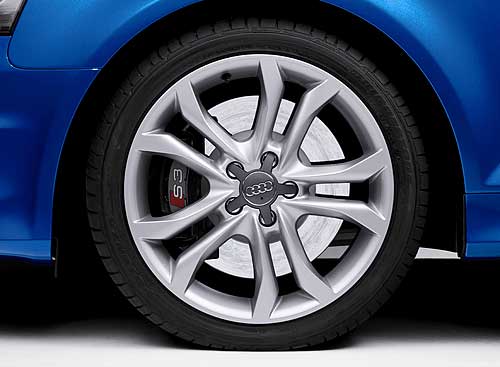
Low profile tires improve vehicle handling by providing more traction. Allows you to shorten the braking distance and improve acceleration. But at the same time they have increased noise and rigidity and are more prone to hydroplaning.
In addition, such tires love only a flat road, since when hitting bumps, they significantly increase the risk of damage to the disc. High curbs and off-road with such tires are best avoided.
Puncture-free tires
Every year in the world the number of cars that are equipped with tires with Run Flat (Run on Flat) technology is increasing. Run Flat technology allows you to drive 100-150 km on a punctured tire. at speeds up to 80 km/h. These tires use a reinforced sidewall, which does not allow it to deform even with a complete loss of pressure.
Promotes the most new technology concern BMW, which serially equips most of its models with this type of rubber, including models under the MINI brand.
Off road tires
Fans of frequent forays into serious off-road usually use off-road tires. Off road tires characterized by a very high rubber profile and a deep, sparse tread pattern. This allows the tire to bite better off-road and climb slopes.

But such tires are poorly suited for movement on high speed By flat road, since the deep tread does not hold the road well and wears out quickly. In addition, the braking distance of the car is greatly increased.
Seasonal tires
One of the main differences between tires is their seasonality. According to seasonality, tires are divided into: summer, winter and all-season. You and I do not wear sandals in winter, and boots in summer, and our cars should not be driven in winter either. summer tires oh and vice versa. It must be remembered that in winter, the car is shod, even in cheap Winter tires, will ride better than the most expensive summer wheels.
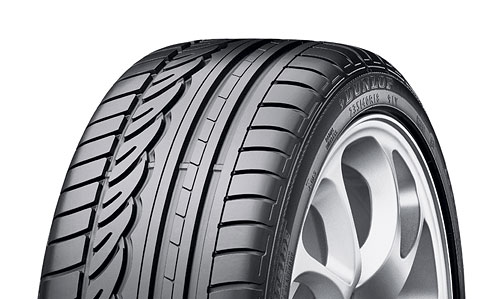
The main task of a summer tire is to ensure maximum grip of the tire with the road, and, accordingly, traffic safety. Summer tires have a high speed index and good wear resistance. But at air temperatures below +7, any summer tire begins to freeze (tan) and loses its grip. This leads to a significant increase in braking distance and deterioration of controllability. This is where winter tires come to the rescue.
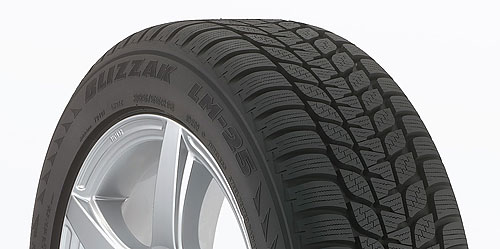
The composition of winter tires is softer and the tire does not “dube” in cold weather. The tread of a winter tire will feel much softer to the touch than a summer one. The main difference between a winter tire is a large number of sipes - narrow slots in the tread pattern. Thanks to the sipes, the wheel has good contact with the road even on snow and ice. But on dry pavement and at air temperatures above +9 winter tires starts to wear out very quickly. With the advent of spring, do not delay with changing shoes for summer tires.
In addition, there are also studded winter tires that are designed for harsh winters. But you need to use such tires only in really difficult conditions. Spikes are banned in many European countries because they damage the pavement. Moreover, modern expensive winter tires cope well with snow even without studs. In Ukraine, it makes sense to install studded tires only if you travel to snow-covered regions with uncleaned roads, for example, to the Carpathians.
On especially difficult snow-covered areas, snow tires can come to the rescue, which you need to have with you when traveling through the same Carpathians. Anti-skid chains are worn on wheels only to overcome a difficult section of the road at low speed (up to 40 km / h).
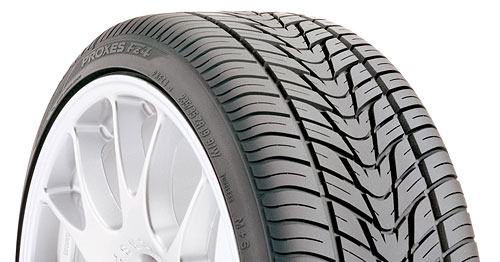
All-season tires are a compromise solution for countries with very mild winter conditions. Roughly speaking, such a tire has one half of the tread for winter and the other for summer. They are inferior in quality to both summer and winter tires.
Marking
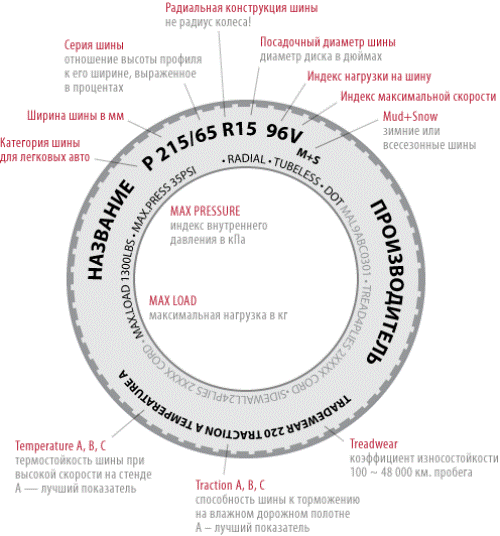
P195/55 R15 84H- tire size
P- tire category for passenger cars.
195
- tire width in mm.
55
- tire series (the ratio of the height of the profile to its width, expressed as a percentage).
R- the radial construction of the tire (not the radius of the wheel!).
15
- tire diameter (disc diameter).
84
- Tire load index - a symbol that corresponds to a certain maximum load in kg. See tab.:
| 60
.......250 | 74
.......375 | 88
........560 | 102
........850 | 116
.......1250 |
| 61
.......257 | 75
.......387 | 89
........580 | 103
........875 | 117
.......1285 |
| 62
.......265 | 76
.......400 | 90
........600 | 104
........900 | 118
.......1320 |
| 63
.......272 | 77
.......412 | 91
........61 | 105
........925 | 119
.......1360 |
| 64
.......280 | 78
.......425 | 92
........630 | 106
........950 | 120
.......1400 |
| 65
.......290 | 79
.......437 | 93
........650 | 107
........975 | 121
.......1450 |
| 66
.......300 | 80
.......450 | 94
........670 | 108
.......1000 | 123
.......1500 |
| 67
.......307 | 81
.......462 | 95
........690 | 109
.......1030 | 124
.......1550 |
| 68
.......315 | 82
.......475 | 96
........710 | 110
.......1060 | 125
.......1600 |
| 69
.......325 | 83
.......487 | 97
........730 | 111
.......1090 | 126
.......1650 |
| 70
.......335 | 84
.......500 | 98
........750 | 112
.......1120 | 127
.......1700 |
| 71
.......345 | 85
.......515 | 99
........775 | 113
.......1150 | 128
.......1750 |
| 72
.......355 | 86
.......530 | 100
.......800 | 114
.......1180 | 129
.......1800 |
| 73
.......365 | 87
.......545 | 101
.......825 | 115
.......1215 | 130
.......1850 |
H- Index top speed- a symbol that corresponds to a certain maximum speed. See tab.:
Tire model- Pilot, Potenza.
Trademark- Toyo, Dunlop.
Trademark enterprises
The name of the country manufacturer
Date of manufacture- four digits in an oval, the first two digits are the week of manufacture, the next two are the year of manufacture (1808 = April 2008).
Conditional symbols on tires:
MAX PRESSURE(internal pressure index) - the maximum allowable pressure in the tire, in kPa.
MAX LOAD(maximum load) - values in kg.
REINFORCED- reinforced tire or tire with increased bearing capacity.
TUBE TIRE- tube tire.
TUBELESS- tubeless tyre.
REGROOVABLE- the possibility of deepening the tread pattern by cutting.
ALL STEEL- for tires with steel cord breaker and carcass.
RADIAL- tire of a radial design.
E- sign of official approval of the certificate of conformity with UNECE rules.
TWI, DSI or another symbol indicating the location of the wear indicators.
M&S(Mud + Snow - mud plus snow) - winter or all-season tires.
All Season - all season tire designed for year-round use.
rotation- a directional tire, the direction of rotation of which is indicated by an additional arrow (do not confuse this arrow with the logo on Dunlop tires).
outside And Inside(or Side Facing Out and Side Facing Inwards) - asymmetric tires, when installing which you must strictly follow the rule of installing a tire on a disk.
Left or Right- means that the tires of this model are left and right. When installing them, you must strictly follow the rule of installing a tire on a car, left - on the left, right - on the right.
RAIN, WATER, AQUA(or "umbrella" symbol) - means that these tires are specially designed for rainy weather and have a high degree hydroplaning protection.
E (circled)- the tire complies with European requirements ECE (Economic Commission for Europe)
DOT- Compliance with US safety standards.
Temperature A, B, C- heat resistance of the tire at high speed on the stand. (A is the best indicator).
Traction A, B, C- the ability of the tire to brake on a wet roadway (A is the best indicator).
Treadwear- wear resistance coefficient (factor 100 is approximately equal to 48 thousand kilometers)
Operation and storage of tires
Be sure to maintain the correct tire inflation pressure and check it every two weeks. The pressure must match the rate specified in the operating instructions for your car, and this rate is often duplicated on the inner cover of the gas tank flap. You need to check the pressure only in a "cold" tire, that is, before the trip, and not after it.
In addition, check the appearance of the tire, there should be no cuts, bubbles (hernias), cracks on the sidewall of the tire. Watch the wear of the tread, its depth, according to the traffic rules, should be at least 1.6 mm. But it is advisable to change tires when the depth reaches 2 mm, and winter tires should be changed already at 4 mm.
Each has a wear indicator, which is a bridge between the tread grooves or numbers showing the remaining depth in mm. The place where this indicator is located is shown by the symbols "TWI", "DSI". At Michelin, the indicator is indicated by a company emblem (Bibendum) or a snowflake (on winter tires).
Tires should be stored in a cool (from +10 to +25C), dry and dark place. They must not be near gasoline or any chemical substances. After dismantling the tires, do not forget to write on the wheels the place of their installation (front right, rear left), so that later each wheel can be returned to its place.
Tires without rims should only be stored upright and should not be stacked or suspended. In addition, the tires need to be rotated a little about once a month so that the load point is not always in the same place.
Tires on rims must be stored in a suspended or horizontal (lying down) position, i.e. they must not be placed vertically.
The most ideal way to store tires is to turn them in to companies that offer a seasonal wheel storage service. There, the tires will be kept in a specially equipped room and stored in accordance with all the rules. It is convenient and practical.
Tough choice
Tire technology does not stand still. Even some 10 years ago, it would have been hard to imagine that even with a completely punctured tire, you can safely continue to move without really slowing down. Or that on winter non-studded tires you can move confidently enough on snow or ice.
A tire is simply a piece of rubber wrapped around a rim. This is a high-tech product, on the quality of which your life may depend.
Carefully choose new tires for your iron horse, since today there really is plenty to choose from. Be sure to follow the rules for installing and operating tires, do not neglect their seasonal change, and your wheels will hold on to the road with all their might.
Marking car tires is an inscription printed on the sidewall of the tire. Being able to correctly decipher this “inscription”, the motorist will be able to recognize many useful information tire size, load capacity, speed and tire performance.
Note that text marking is applied only to the tire rim, while the inscription is duplicated on both sides. In this article we will figure out how to decipher the tire markings of a car.
Color marking
Markings are not only text, but also color. The latter are applied to the tread or sidewall of a new tire. Such markings are not durable, and after a while (after washing or many kilometers) they are erased.
In most cases, color markings contain information intended for the manufacturer, but sometimes they can be useful for experienced tire fitters. In particular, colored markings are used to mark the areas with the greatest unbalance around the perimeter of the tire.
So, for Bridgestone tires, the following color markings are used:
- Yellow dot. Indicates the easiest place.
- Red dot. Indicates unevenness in the material in the tire, which, in most cases, is a simple overlap of layers (solid point).
- White stamp. Indicates that the tire has passed the quality control inspection.
Also, on most tires, you can find a continuous strip running around the entire perimeter of the tire. It can be absolutely any color and does not carry any useful information. Its purpose is purely technical - it indicates the workpiece from which the material for the tire was cut. Therefore, if one tire has this stripe in yellow, and the other has blue, then this only indicates that these tires are from different batches.
Text marking

The most informative marking is the inscription on the sidewall of the tire, consisting of a set of numbers and letters. Let's learn how to "read" such markings and for clarity, we will analyze the following inscription - 195/65 R15 91T, where:
195
- indicates the width of the tire profile in mm;
65
- is the percentage of the height of the tire profile to its width. This figure determines the height of the tire at its given width. In the marking of some tires, this figure may be absent. In this case, the value is 80%, and such tires are called “full profile”;
R- This letter is used to indicate the design of the tire carcass, although some motorists mistakenly believe that it indicates the radius. In this case, it is radial - R. Previously, tires with a diagonal design were also produced, but now they are no longer found;
15 - indicates the diameter of the wheel in inches, that is, the inner diameter of the tire.
All of these numbers and letters are used to indicate the size of the tire. Focusing on them, the motorist will be able to easily select the appropriate tires for specific wheels and for a specific car. These are very important parameters, since only certain tire sizes are suitable for a certain disk.
The numbers and letters following the tire size indicate its power and speed characteristics.
91 is the bearing capacity index of the tire. Indicates the maximum possible load that the tire can handle without breaking and fully complying with the manufacturer's specifications. To know exact values You can use the table at the end of the article.

T is a speed index that is used to determine the maximum allowable speed at which a tire can be operated. There is nothing to worry about if a motorist exceeds the permitted value for a short period of time and, for example, instead of the permissible 190 km / h, he drives at 210 km / h. However, if the driver exceeds the speed over and over again, the tire may deform and collapse as a result of overheating.
Deciphering the tire speed index
| speed index | ||||||||||||||||
Tire manufacturers determine the maximum allowable speed through bench tests, and they recommend that motorists drive at speeds 10-15% lower in order to maximize the life of the tire.
In addition, some tires may have Max Load written on them, followed by limits in kilograms or pounds.
Also for light trucks and minibuses, special multilayer tires are produced that can work under heavy loads. They are marked with the inscription REINFORCED or simply with the letter “C”, which is indicated after the diameter of the machine (for example, 195/70 R15 C).
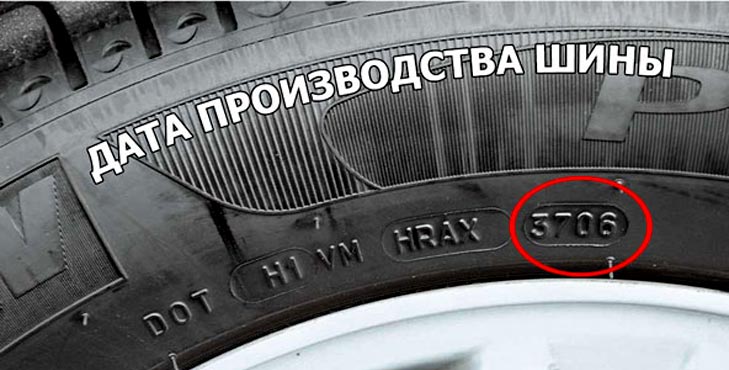
The date of manufacture of the tire is also indicated on the sidewall of the tire. To designate it, a four-digit number is used, which is indicated in the oval immediately after the DOT standard code. The first two numbers indicate the week of the year, and the remaining two indicate the year of production.
Older tires made in the 80s used only three digits to mark the date. Then (in the 90s) they began to add a triangle to these numbers, and in last years manufacturers use only four-digit format for marking the date.
Tire markings according to American standards
The marking of tires from American manufacturers differs from European ones, and there are two options for designating sizes at once. The first of them is quite similar to the European marking, however, before the size designation, either the letter “P” (Passenger - tires for a passenger car) or the index “LT” (Light Truck - tires for light trucks and minibuses) is placed here. In this case, the size marking will look something like P 195/70 R14 or LT 235/75 R15.
But another marking of American tires is significantly different from the European one. In this case, the tire sizes will be indicated something like this: 31 × 10.5 R15, where the numbers “31” and “10.5” indicate the outer diameter and width of the tire profile in inches, respectively, but R15 is “read” the same way as for European tires.
Additional designations on tires

Some manufacturers use additional designations in tire marking. Below we will look at the most common of them:
M&S(Mud + Snow). Such tires are considered all-weather and are suitable even for driving in snow or mud.
All Season- All-season tire that can be used all year round. Note that symbolic patterns can also be applied to seasonal tires.
rotation- tires with this marking are directional, and an arrow is additionally applied to the sidewall of the tire indicating the direction of rotation of this tire.
outside and inside- tires with this marking are asymmetric, and when installing them, it is necessary to strictly follow the rules for installing a tire on a disk. So, when mounting such a tire, the side marked Outside (outer side) should be on the outside of the machine, and the side marked Inside (inner side) should be on the inside.
left or right- indicate whether it is a right tire or a left one. When mounting such tires, it is necessary that the right tire is on the right, and the left tire is on the left.
Tubeless- such an inscription indicates that we have a tubeless tire in front of us.
Tube Type- indicates that the tire must be operated only with a tube.
MAX Pressure- the maximum allowable pressure in the tire, indicated in kPa.
Rain, Water, Aqua(or symbolic drawings in the form of an umbrella or a drop) - indicate that the tire is designed specifically for rainy weather.
The braking distance of a car, as you know, depends not only on the speed chosen by the driver, but also on tires, more precisely, on their type and tread quality. There are no universal tires, and everyone chooses them according to their taste and, taking into account their driving style. Driving instructors believe that the choice of car tires should be taken seriously, and do not forget that your safety depends on them.
Tire types by season
More from the course driving lessons we know that all tires are divided into winter, summer and all-weather. In addition, they are divided by design: there are radial and diagonal; by classification: tubeless and chamber.
- Winter tires have a high tread, thanks to which the wheels grip better on an icy or snowy road. Winter tires are divided into two types: European and Scandinavian type. Often, winter tires are equipped with spikes for safe driving on ice and snow, but on wet pavement with such spikes, the opposite effect is observed.
Therefore, in the question: what is better - Velcro or spikes, there is no definite answer, a lot depends on road conditions.
- As for summer tires, they have a long service life at high temperatures and when driving on heated asphalt. At low temperatures, summer tires "dube" and lose their properties.
- All season tires most commonly used in temperate regions. She behaves well in the rain, on wet pavement, but in very coldy it is better to give preference to other types of tires.
By the way, in dry weather elastic tires wear out much faster than summer options.
How is the drawing different?
All modern car tires differ from each other in several ways. These are sealing, seasonality (as we talked about above), as well as a tread pattern.
The drawing can be:
- Directional or symmetrical. Symmetry goes, as a rule, relative to the central axis, which perfectly removes water from the tire. In addition, such rubber does not have a strong noise when driving.
- Asymmetrical. Such a pattern increases the cost of the tire, since in this case there is excellent grip on the surface, even wet.
- Non-directional or universal. This is a budget tire option, and their performance properties are the same regardless of road conditions. When assembling cars, these tires are most often installed by the manufacturer.
Off road tires
Separately, it is worth talking about off-road tires. These tires have a fairly high rubber profile, and the tread grooves are very deep. This tire design gives the car a good ride on the road. With such rubber, your SUV will pass on any surface, be it a swamp, sand or rocky surface.
But even these tires have drawbacks.
Off-road tires are not designed for aggressive and fast driving, for example, on smooth and high-quality asphalt.
Moreover, a high tread wears out rather quickly, and after that the car does not have very good stability, and traffic safety is reduced.
The design features of this type of rubber are not better side affect the braking distance of the car. Basically, according to experts, they increase it.
Video on how to choose the right tires:
Drive by the rules and good luck on the road!
The article used an image from the site www.matizclub.ru




